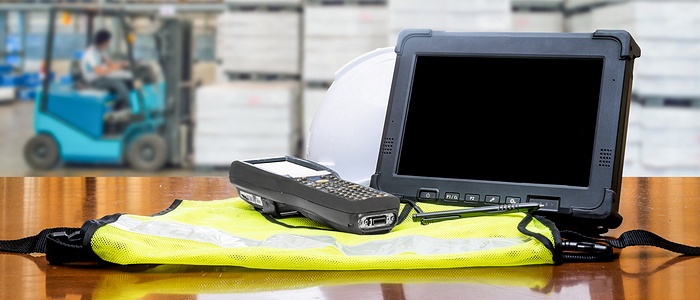3 things to consider setting up SAP Business One for mobile working

If you’re an existing user of SAP Business One, or you’re thinking about rolling it out in your organisation, you’ll know it has a range of mobile features that make it a great option for ERP connectivity in the field. Whether you need sales, inventory management or reporting functionality, it’s all possible with little more than a consumer-grade handset and an internet connection.
That said, setting up SAP Business One for effective mobile working involves more than just purchasing devices and installing the free app. Before you push ahead with a rollout, you should consider the unique requirements of your business and workforce, and how the project will really improve the productivity and profitability of your field service team.
Here are three of the most important things to consider:
1. Devices
Back in the day, it was more or less accepted that field service technicians should use purpose-built, ruggedised devices in order to protect costly hardware against day-to-day bumps and scrapes. This was more expensive than off-the-shelf kit, but meant devices lasted much longer in harsh conditions.
A lot has changed since then. The cost of consumer-grade handsets and tablets has come way down; a range of screen sizes and a thriving app scene have turned them into proficient and user-friendly business tools; and the BYOD trend has made many workers more inclined to use personal devices than business-owned ones.
{{cta(‘57996e41-2877-445c-bc25-5d2eb07c1c29’)}}
As such, planning a SAP Business One mobile app rollout means deciding between ruggedised and consumer-grade hardware. If your field service staff are going to be using their devices in harsh conditions on a regular basis, ruggedised might be worth the extra cost. If not, it might be better to go down the consumer route.
2. Security
It’s vital that any organisation considering mobile working should address the potential security risks. Mobile devices are easily lost or stolen, and may be used on unsecured Wi-Fi hotspots, which could lead to data breaches that are catastrophic for both the business and its customers.
So, before you set up SAP Business One for mobile working, be sure to assess the sensitivity of your ERP data and whether any extra security measures – such as an MDM solution with features like remote device locking – are necessary.
3. Usability
Finally, remember that SAP Business One – like any ERP solution – is a complex product that solves many different business problems, and the needs of a field service technician may be completely different to the needs of a finance manager who sits behind a desk eight hours a day.
As such, setting it up for effective mobile working involves establishing exactly what functionality your field service staff require, as well as how to deliver that functionality as simply as possible. A densely populated financial dashboard isn’t likely to be of much use to a practically oriented technician, whereas the ability to order parts and log activities on the go might be invaluable.
If it helps, think back to what you actually want to achieve from the project. Perhaps you’re looking to increase job speeds through easier access to information, or reduce service-to-invoice time by cutting down on admin and paperwork, or improve customer satisfaction with better optimised scheduling.
All of this is possible with SAP Business One’s mobile features – but you’ll have to deploy them in a way that really empowers your field service staff to deliver a higher quality, more profitable service than ever before.
To find out more about how field service organisations are using technology to drive profitability, why not read our free ebook: {{cta(‘4b2e3a31-29fa-4b58-a999-a579358a38b2’)}}?
{{cta(‘dc925dea-86a3-4b9e-923f-b63ff16bc414’)}}

